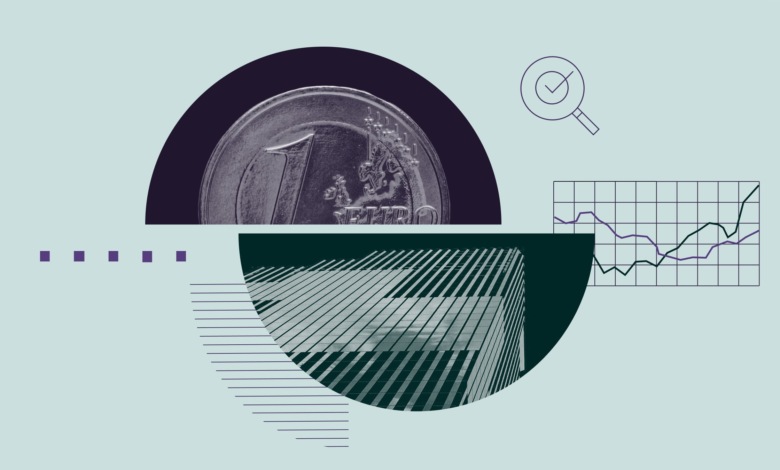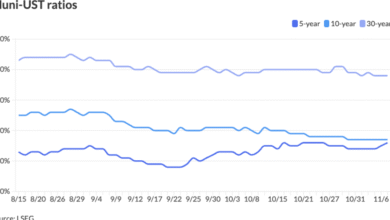What Is Financial Repression, and Why Should Bond Investors Fear It?

Key Takeaways
- Financial repression refers to economic and monetary policies aimed at keeping interest rates artificially low in order to reduce the real cost of public debt.
- Global public debt will exceed 100% of GDP in 2029, according to the IMF.
- Gold, real estate, and stocks can help investors counter financial repression.
With global public debt chasing historic records, one danger for investors in government bonds is so-called financial repression.
What Is Financial Repression?
Financial repression refers to economic and monetary policies aimed at keeping interest rates artificially low relative to inflation to reduce the real cost of debt. For an investor in government bonds, this strategy is dangerous: If inflation is higher than the yield, the real value of the capital is reduced, and the investor incurs a negative real yield.
“To contain ever-increasing public debt, the politically viable path is not that of drastic cuts to welfare, but that of creeping monetization: allowing real rates to become negative, or ‘financial repression’,” writes Giordano Lombardo, CEO of Plenisfer Investments, in his quarterly letter dated Oct. 13.
Financial repression can be achieved in various ways, from managing interest rates to increasing the money supply to purchasing government bonds on the market. It can also consist of trade restrictions, barriers to the free movement of capital, and other policies aimed at directing money flows toward certain uses, such as government bonds, rather than allowing them to circulate freely.
“Interest rates are two-sided by nature. Although their recent decline, following inflation in 2021-2022, has reduced costs for businesses and consumers, it also means lower returns on investments,” explains Gabriele Serafini, economist and professor at the Niccolò Cusano University in Rome. “This reduction can limit the financial system’s ability to redirect capital to innovative sectors.”
Why Has Financial Repression Become Irresistible for Governments?
Public debt is on the rise worldwide. According to the IMF, the US debt-to-GDP ratio will exceed 143% in 2030, up from 122% in 2024; Italy will reach 137% from 135% in 2024, and France will approach 130%, up from 113% last year. Since the great financial crisis, public debt has grown, aided by the monetary easing policies of central banks.
The trend continued in 2022 and 2023, despite soaring inflation and the gradual reduction of monetary policy support. In addition to increased social spending, there was also increased spending on interest on government bonds, which in the most developed countries represents about 3% of gross domestic product. The ways for reducing debt could be economic growth or improving public finances through increased revenue, more taxes, or spending cuts.
“The problem is – traditional solutions are not available,” says Algebris Investments’ global credit team in a report of Oct. 2. “The fiscal tightening required to balance budgets is not politically viable, and advanced economies can’t grow out of debt as deficits run at 5-6% and real growth at 1-2%.”
“This new set-up is bad news for savers,” says Algebris Investments’ team. “As governments struggle to balance debt ratios, they can’t afford to leave any premium on the table for investors. They thus face strong incentives to adopt policies that compress real yields. Interest rates below inflation means that debt can deflate even in the absence of growth.”
Governments Step Up Financial Repression
Financial repression is not new. It has been practiced over the past decade in the US, Europe, and Japan by printing money to buy government bonds, artificially increasing demand and suppressing yields.
As Algebris Investments explains, Europe, the US, and the UK shifted 20% of their outstanding debt to central banks’ balance sheets during the covid pandemic. Japan, on the other hand, has been explicitly controlling the yield curve since 2016 while China has capped deposit rates for over 30 years.
The trend towards financial repression is accelerating. In the United States, certain reforms could keep government bond yields below equilibrium levels. The Supplementary Leverage Ratio (SLR) reform, which revises capital requirements for banks, effectively incentivizes the purchase of public debt. The European Central Bank’s Transmission Protection Instrument (TPI) program, introduced in July 2022, is designed to prevent excessive volatility in government bonds.
How to Invest To Counteract Financial Repression
To avoid the effects of financial repression, investors should focus on real assets such as gold, precious metals, real estate, or stocks, according to a Raiffeisen note on Oct. 3. “While all of these asset classes offer good protection against inflation, dividends and income distributions also play a role in the case of stocks and real estate funds.” For example, the Morningstar Europe Dividend Yield Focus Index, which includes European stocks with high dividends and financial quality, has a yield of 4.50%, above eurozone inflation of 2.2% in September 2025.
The global credit team at Algebris Investments also highlights that European bank stocks offer real yields around 7% through a combination of high dividend yields and share buybacks. Subordinated credit pays almost 3%, high-yield emerging market securities offer real yield of 4-5%, and local currency bonds have real yield between 5% and 10%, despite the weak dollar.
The author or authors do not own shares in any securities mentioned in this article. Find out about
Morningstar’s editorial policies.






